thebigpicture
Latest
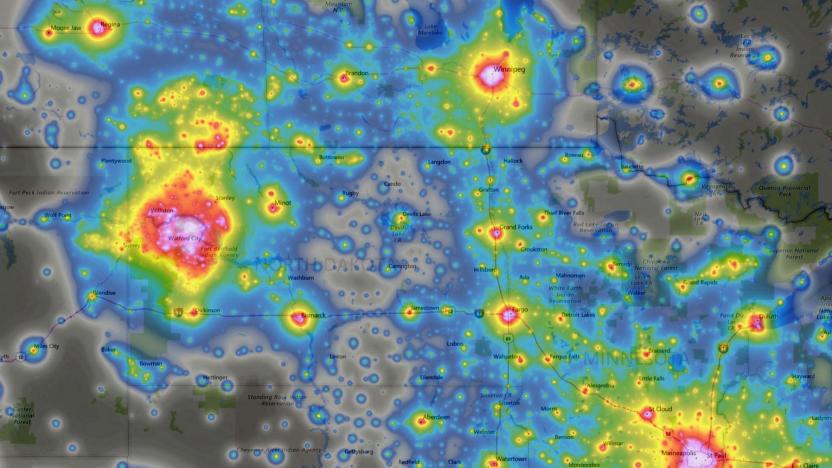
Tracking down unexpected sources of light pollution
Light pollution is the bane of stargazers, which is why you need to get out of the city to make the best use of your telescope. However, even in the middle of nowhere, your observations might still be disrupted by stray light sources. That prompted a budding astronomer, Alex Altair, to investigate exactly what was producing US light pollution in places with nary a city or town in sight.
Steve Dent03.12.2020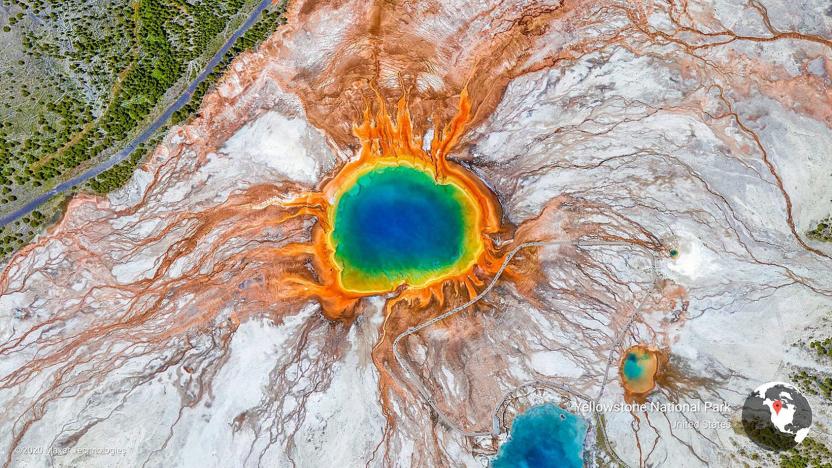
Google's world is your next wallpaper
Google Earth is arguably the best product Google has ever created because it allows anyone to explore our planet (and beyond) with ease. However, you may not know that Google also has an app called Earth View that contains some of the best curated images you can find on the app. Google recently announced that it has updated this collection with over 1,000 new images (for 2,500 in total) and introduced new search tools to find that perfect wallpaper background.
Steve Dent02.19.2020
Scientists tried to recreate a mummy's voice with an electronic larynx
Researchers recently resurrected the "voice" of an ancient priest for the first time since his death over 3,000 years ago. Called Nesyamun, he lived during the time of the pharaoh Rameses XI, who ruled from 1107 to 1078 BC. The team used a combination of scanners, 3D printing and synthesized sound to create the vocal simulation.
Steve Dent01.29.2020
Nefertiti's bust joins the digital age
Can museums can really "own" the digitization of cultural heritage artifacts? The bust of Nefertiti shown above is a 3D rendering I created myself on 3DS Max from a digital file, obtained by artist Cosmo Wenman after three years of persistence. Now, anyone can download it and marvel at this masterpiece, to get a closer look than you ever could at Berlin's Neues Museum, where the bust itself resides.
Steve Dent11.29.2019
A star died violently and left behind this 'fluffy' ball
Stars die all the time, but the untimely passing of SN 1572, also known as Tycho's Supernova, is possibly the most famous. That's because it's relatively close to us in the Milky Way's Cassiopeia constellation, so when it exploded in the year 1572, it became the second-brightest object in the night sky for a time. It caught the eye of many astronomers of the day, but was named for Danish astronomer Tycho Brahe, who made the most accurate observations.
Steve Dent10.21.2019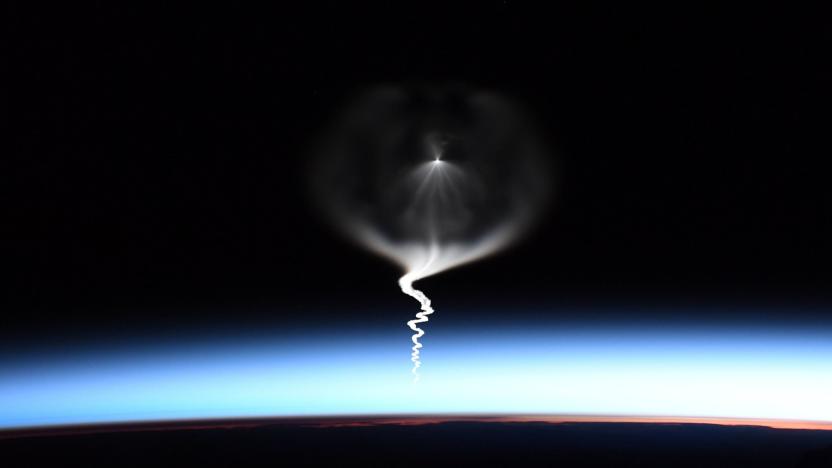
Soyuz 61 leaves a ghostly trail as it tracks toward the ISS
Yesterday, NASA's Expedition 61 mission launched from the Baikonur Cosmodrome on a Soyuz MS-15 rocket and docked to the International Space Station (ISS) some six hours later. From the ground, it was a spectacular liftoff as usual, but this time, the best view might have been from the space station itself. With her best friend Jessica Meir onboard, astronaut Christina Koch captured an eerie, magnificent photo of the Soyuz craft as its second stage rockets propelled it toward the ISS.
Steve Dent09.27.2019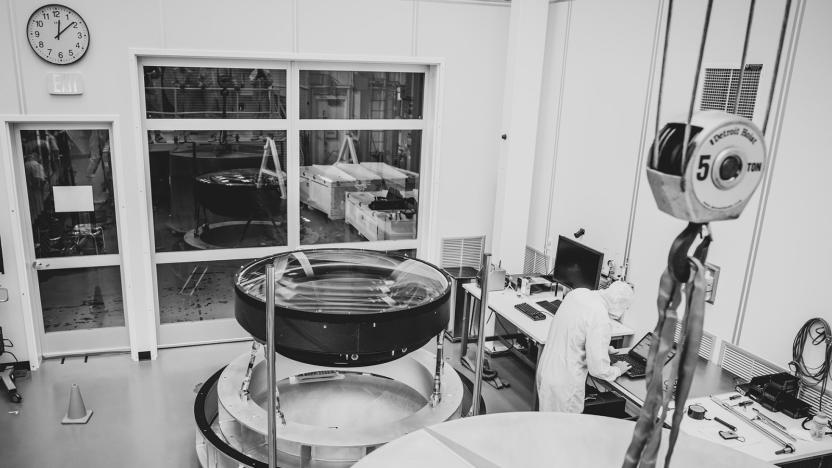
Moving the largest high-performance lens ever built
Not all the most interesting telescopes need to live in space. The Large Synoptic Survey Telescope (LSST) will sit on top of a mountain in Chile some 8,800 feet up and snap 3.2-gigapixel (3,200-megapixel) images of the sky every 20 seconds. All told, it will be able to snap digital images of the entire southern sky every few nights. By taking relatively long 15-second exposures, scientists will be able to study the early universe, track dimly-lit asteroids and better understand dark energy.
Steve Dent09.23.2019
Algorithms help an artist tease portraits out of thread
Our brains are great at forming images out of mishmashes and blotches of color, as a pointillist will tell you. Artist Ani Abakumova has taken that idea and applied it to simple colored threads to create incredible woven art. Creating thread art isn't as simple as painting dots, however, so her husband Andrey Abakumova developed an algorithm that lets her weave the threads to form lifelike representations of artworks like the Mona Lisa and Girl with the Pearl Earring.
Steve Dent09.12.2019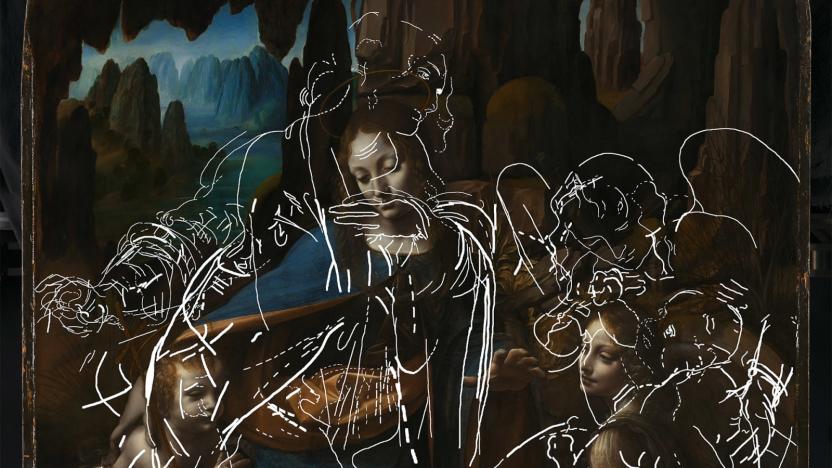
A hidden da Vinci lurks beneath 'The Virgin of the Rocks'
Researchers at the National Gallery of London have used cutting-edge techniques to reveal a hidden drawing beneath Leonardo da Vinci's The Virgin of the Rocks. It shows that the great artist and his assistants, after laying out the original design, elected to take the biblical-themed painting in a completely different direction, to say the least.
Steve Dent09.03.2019
Creating electricity from a bog in a bomb crater
They might not deliver as much electricity as solar panels and windmills, but Geobacter have an extra talent. The microorganisms can purify water by consuming waste, then excrete electrons we can harvest as energy. To show that in action, Artist Teresa van Dongen has created an installation called Mud Well that illuminates, as it were, their inner workings.
Steve Dent08.12.2019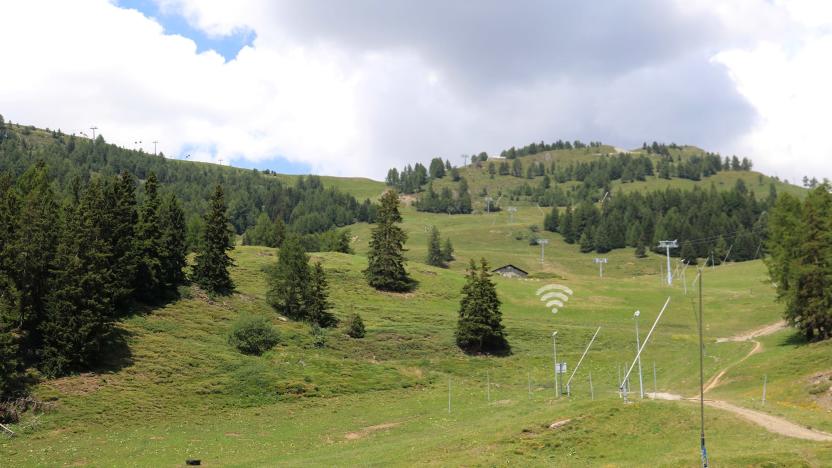
Land art reminds you to maybe go offline sometimes
Leon Keer, a Dutch pop-surrealist and land artist, has created a simple but monumental piece with a very clear message. Conceived for the Vision Art Festival in the Swiss alps of Crans-Montana, 'offline' anamorphic land art, will make visitors do a double take when they see a WiFi symbol seemingly floating in mid-air at the pristine resort.
Steve Dent08.07.2019
Facing your AI self at the 'Neural Mirror' art installation
Italian design studio Ultravioletto has created a mirror that lets you see yourself the way corporations see you: as a collection of data points. At first, the Neural Mirror installation (located at a former church in the Italian city of Spoleto), seems like an ordinary mirror. But after you've been duly scanned and processed (with the system estimating your age, sex and emotional state) you'll quickly see something else; a ghostly vision of a machine's idea of who you are.
Steve Dent07.29.2019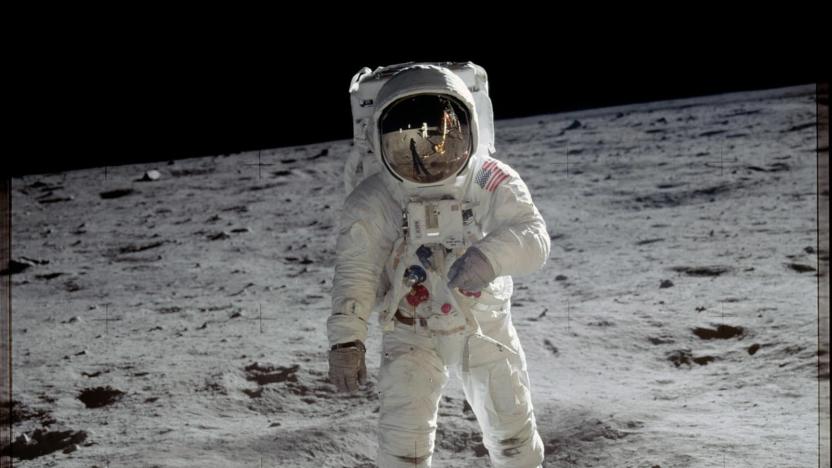
Neil Armstrong's Buzz Aldrin photo is unparalleled in art
Few would deny that Neil Armstrong's shot of fellow astronaut Buzz Aldrin is one of the most famous and compelling photos ever taken. What makes it so iconic? Of course, he had access to a place that only 11 other human beings have been, but there's more to it than that. The photo itself is well composed, full of incredible details and charged with the energy of the occasion. How Armstrong got it is a story of not just luck, but preparation and a great eye.
Steve Dent07.20.2019
One of these models doesn't exist
Virtual humans are gradually scaling the uncanny valley, and like artificial intelligence, they're coming for our jobs. A case in point is Imma, a digital Instagram model who has garnered over 50,000 followers thanks to her (its?) trendy, street-style selfies and photos. Imma just entered uncharted territory for 3D rendered humans, appearing in a makeup spread with two real models for Kate cosmetics in Vice's i-D site in Japan.
Steve Dent05.22.2019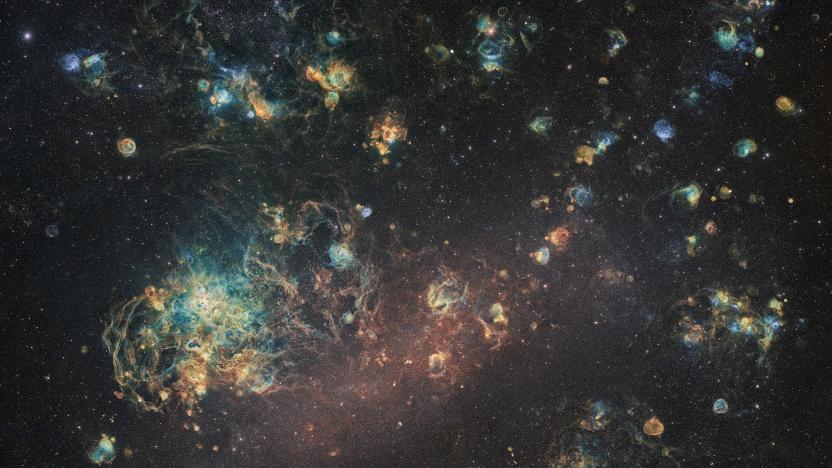
The Large Magellanic Cloud comes alive in a 204 megapixel image
The Large Magellanic Cloud is what Austin Powers might call a quasi galaxy, just one percent the Milky Way's size and orbiting it like a hanger-on. At a distance of 163,000 light-years from Earth, you might think it would take a space telescope like Hubble or a huge observatory to do it justice. But the 204-megapixel image above, showing the Magellanic Cloud in incredible, colorful detail, was shot by a small group called Ciel Austral using a telescope in Chile just 160mm (6.3 inches) across.
Steve Dent05.14.2019
1960s aerial spy photos reveal hidden archaeological sites
Archaeologists use satellite photos to spot potential archaeological sites, but urban sprawl and other human development has erased many traces of ancient civilizations. To get around that, Harvard's Jason Urs and Emily Hammer from the University of Pennsylvania figured out how to effectively go back in time to when the land was less despoiled. They dug up and archived a trove of U-2 spy photos from the '50s and '60s, eventually finding ancient canals and "desert kite" stone structures built in northern Iraq by the Assyrians up to 8,000 years ago.
Steve Dent05.06.2019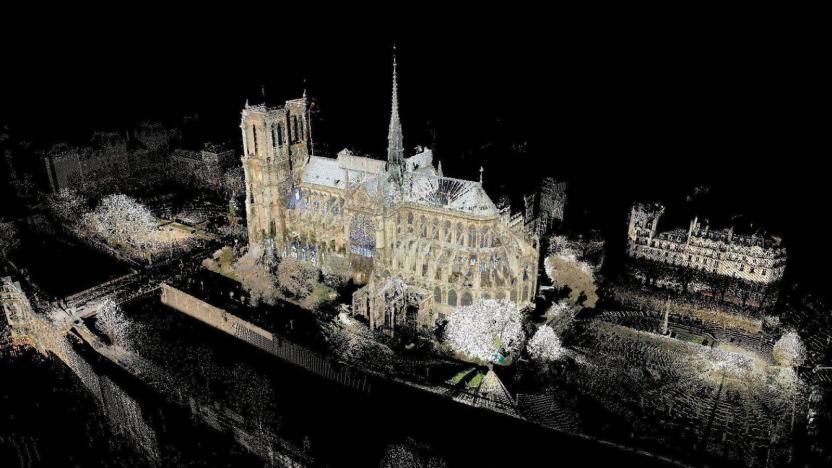
The billion point laser cloud that will help rebuild Notre Dame
On April 15th, 2019 around 6:40 pm, I was walking around the Jardin du Luxembourg park in Paris with some friends when we saw some yellow colored smoke in the sky. We thought nothing of it, but soon discovered, shocked, that one of the most famous landmarks in the world, the Notre Dame cathedral just north of the park, was engulfed in a terrible blaze.
Steve Dent04.29.2019
Israel's Moon probe snaps a final photo before crashing
The Beresheet spacecraft from Israel's SpaceIL was facing long odds to land on the Moon, being the first ever privately launched probe to attempt it. Alas, its engine cut out during the landing attempt, communication was lost, and Beresheet crashed into the surface. Fortunately, just before that happened, the spacecraft turned its camera toward the Moon's horizon and managed to snap a final, sublime photo of its cratered surface.
Steve Dent04.14.2019
Why Garfield phones have littered French beaches for 35 years
There's no better symbol of plastic ocean pollution and '80s consumerism gone wild than the Garfield phones of Brittany. The handsets, in the form of the aggressively unfunny cat, have been washing up on French beaches for decades. However, the novelty has long since worn off for residents who have been picking them up since the '80s. Now, a local anti-litter group called Ar Vilantsou has finally found the source: a lost shipping container.
Steve Dent03.31.2019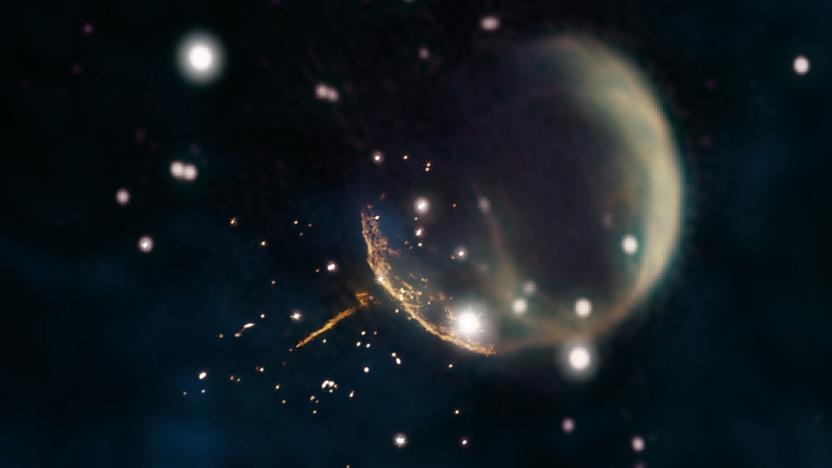
'Cannonball' pulsar points to the supernova that formed it
Astronomers have clocked a spinning star at 2.5 million MPH and grabbed an image that leaves no doubt where it came from. Using NASA's Fermi Telescope and the Karl G. Jansky Very Large Array (VLA), a team of scientists imaged pulsar J0002, originally discovered by citizen science project Einstein@Home. What makes it look so cool is the clear evidence it came from a recent supernova. "Thanks to its narrow dart-like tail and a fortuitous viewing angle, we can trace this pulsar straight back to its birthplace," said NRAO scientist Frank Schinzel.
Steve Dent03.24.2019